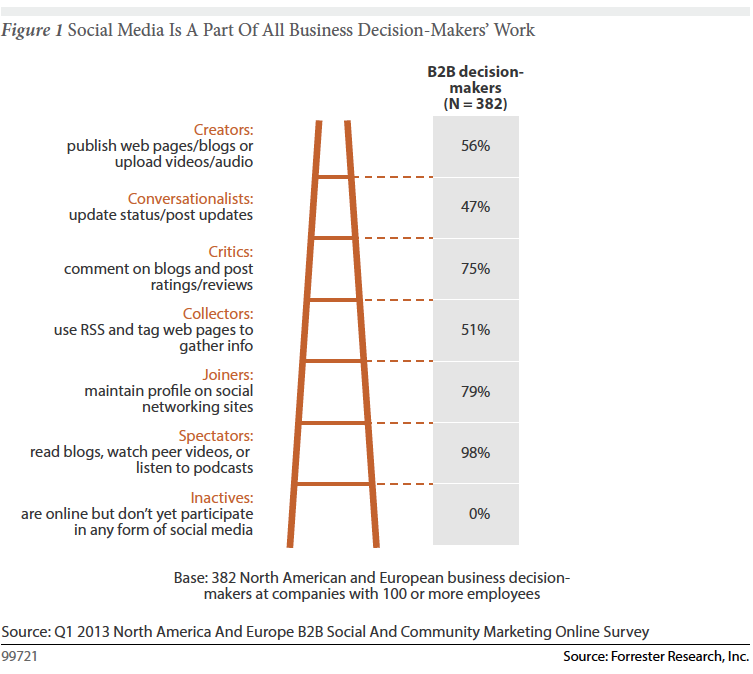
Although much of the interest in social media marketing has been focused on consumers, the B2B market has also been busily adopting the same communication techniques. This report, "The Social Behaviors of Your B2B Customers," points out that a B2B Social Technographics survey conducted five years ago by Forrester about B2B buyers' social media adoption was met with "widespread skepticism" among marketers.
How, Not Whether
But now, Forrester said, there is no doubt. All business customers can be reached by social channels, and 98% of business decision-makers also read blogs, watch videos or listen to podcasts. "It's no longer a question of whether you should use social, but how," the report said. Just as B2B marketers target their customers for different stages of their customer lifecycle, so they now must factor in how social media is used in those stages.
Social media's use varies not just by stages in the lifecycle, according to the report, but also by such factors as country, the age of the B2B customer and job type. For instance, business decision-makers in France and Germany are more likely to create content such as web pages, blogs or videos than those in other countries in large part because their native languages are not widely used outside their homelands.
Many senior decision-makers also tend to be users of social media at work, although B2B marketers often expect that senior decision-makers are not as receptive to social media as others. As for job type, those who are marketers or salespeople are more likely to use Twitter and other social media than IT workers, which makes sense since marketers and salespeople tend to be more conversation-oriented.
Niche Communities
The choices of social media communities are not universal either, even across the same demographics, since the report points out that specific social networks and communities are used for specific reasons, which might be either personal or work-related. Forrester notes that the most popular social communities tend to be niche ones focused on specific objectives, such as IT Central Station, Cisco Communities or SAP Community Network and similar vendor-support forums or brand-related communities.
Facebook is hugely popular with consumers, of course, and, for business decision-makers, it's used mostly for personal rather than business reasons. But a business-oriented site such as LinkedIn is, as one might expect, more commonly frequented for business reasons. Twitter, Google+ and Pinterest barely register as being sites used specifically for business purposes, although there is some mixed personal and business use on those sites.
Different Users, Different Uses
As with consumers, different social media are being used differently by B2B users. Forty percent of LinkedIn users, for instance, will interact with a group affiliated with a brand or vendor, a significant number even though the dominant activity for 88% of LinkedIn users is connecting with peers and colleagues.
As with consumers, Twitter has become an environment where B2B users seek support for a product issue, which means that the product maker needs to monitor that service. The report also points out that, even though few business decision-makers frequent Facebook for business purposes, those who do follow a brand or vendor, or click on an ad or sponsored story, for business reasons. Forrester recommends that B2B marketers have at least a foothold in Facebook to reach those users.
